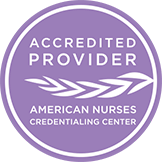Several complications of PN could occur and must be watched for. Table 2 outlines some of the more frequently seen complications, their causes, signs and symptoms, and potential interventions. Some complications, both common and uncommon, will be detailed more in-depth.
Table 2: Parenteral Nutrition Complications| Complication | Causes | What to Monitor | Intervention |
|---|
| Sepsis | - High glucose content of fluid
- Venous access device contamination
| - Temperature
- WBC count
- Insertion site infection
| Maintain sterile technique when changing dressing and tubing. Consider removal of line with replacement of alternative site
If the blood culture is positive, the provider may initiate antibiotics. |
| Electrolyte imbalance | - Iatrogenic (caused by the treatment, in this case, PN administration)
- Effects of underlying disease (fistula, diarrhea, vomiting)
- Blood sample contaminated by PN
| Electrolytes initially and at least daily | Treat underlying cause.
Provider may change the concentration of electrolytes in PN. |
| Hyperglycemia | - Insufficient insulin secretion
- High glucose content of PN
- Blood sample contaminated by PN
| Frequent blood glucose | Administer insulin.
Provider may decrease glucose content of PN. |
| Hypoglycemia | Abrupt discontinuation of PN | Frequent blood glucose | To stop PN, reduce the rate by 50%, then discontinue after 2 hours. If PN must be stopped abruptly, hang a separate dextrose solution if the insulin has been administered. |
| Hypervolemia | Iatrogenic
Underlying disease (heart or renal failure) | - Intake and output (I&O)
- Daily weights
- Central venous pressure (CVP)
- Breath sounds
- Peripheral edema
| Provider may order more concentrated PN. |
| Hyperosmolar diuresis | High osmolarity of PN | | Provider may decrease the concentration of PN. |
| Hepatic dysfunction | Iatrogenic | - Liver function
- Triglycerides
- Jaundice
| Provider may change macronutrients in PN. |
| Hypercapnia | Excessive calories | Arteria blood gasses | Provider may reduce calories/ |
| Lipid intolerance | - Low birth weight or premature neonate
- History of liver disease
- History of elevated triglycerides
| - Bleeding (occult blood in stool, coagulation studies, platelet levels)
- Oxygenation levels
- Fat overload syndrome
- Triglyceride levels
- Liver function
- Hepatosplenomegaly
- Decreased coagulation
- Cyanosis
- Dyspnea
- Allergic reaction (nausea, vomiting, headache, chest pain, back pain, fever)
| Administer lipid solutions slowly initially while observing for allergy symptoms. |
| Lipid particulate aggregation | Unstable mixture of dextrose solution with lipids | Monitor the lipid composition | Observe for cracking or creaming of fluid and discontinue or do not use lipids with these characteristics. |
| (Nettina, 2019) |
Though PN is often essential and beneficial, it is not without potential adverse effects and complications.
Patients receiving PN long-term are at an increased risk of bone demineralization and catheter infections (Hartl et al., 2009).
Refeeding syndrome is a potentially fatal complication caused by fluid and electrolyte shifts in already malnourished patients receiving PN. Significant signs and symptoms of refeeding syndrome include trouble breathing, seizures, weakness of the heart, coma, and even death (Reber et al., 2019).
Hepatic and metabolic complications are possible and include high blood sugar, high triglycerides, fatty liver, and osteoporosis. Elevated triglycerides are often seen in up to 50% of patients receiving PN. These high levels can induce acute pancreatitis, further complicating the healing process (Hartl et al., 2009).
Electrolyte imbalances can occur while administering PN to restore a patient's nutritional status. Electrolytes should be monitored initially with administration and at least daily (Nettina, 2019).
Hyperglycemia and hypoglycemia may also occur with the administration of PN. Hyperglycemia occurs due to a high glucose content of the PN or if the patient has insufficient insulin creation. The patient would need to be administered insulin. Hypoglycemia occurs if PN is discontinued too quickly. To reduce the risk of hypoglycemia developing, discontinue PN slowly (Nettina, 2019).






